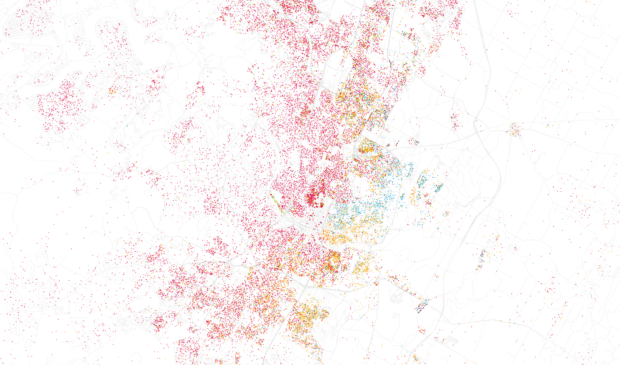Local efforts helping with 2020 census
Thursday, February 6, 2020 by
Jo Clifton City Council members heard an update on 2020 census preparations at Tuesday’s work session. The presentation emphasized the importance of the census and efforts the city and Travis County will undertake to make sure that communities at risk of being undercounted are counted to the greatest extent possible. Although many people may not realize the importance of the decennial count, city demographer Ryan Robinson and Austin and Travis County Census Program Manager John Lawler stressed that the allocation of $800 billion a year in federal funds to state and local communities is dependent on an accurate count.
Texas is also one of a handful of states expected to gain seats in the U.S. House of Representatives. Texas and Florida are expected to gain three new seats, with North Carolina, Colorado, Arizona, and Oregon expected to gain at least one each. Those who draw the maps for the Texas Legislature, county commissioners courts and city council districts will also rely on new census data. Lawler said the U.S. Census Bureau is doing a good job, but he urged local communities, including Austin and surrounding counties, to step up and help. With 95 percent of households receiving an invitation to respond to the census in the mail, every person will have an opportunity to respond by mail, phone or online.
Digital and media ads and bilingual mailers about the census will start in March and census weekend is the final weekend in March. The Census Bureau and local partners will be working to get everyone counted from April through July. Austin and Travis County each set aside $200,000 in their current budgets for census activities and others have also contributed, but the partners still seek about $300,000 in donations.
The city and the county also need volunteers to visit in person with people who might otherwise not be counted. Lawler encouraged potential donors and volunteers to check out the Austin-Travis County 2020 Census website. He said he is hopeful that the city will allow city employees to volunteer either eight or 16 hours of their working time to help find the hard-to-reach, including young children, non-English speakers, the elderly, immigrants, households of color, the disabled, and members of the LGBTQ community, as well as college students and the homeless.
Mayor Pro Tem Delia Garza asked whether a question about immigration status had been removed from the questionnaire and Robinson said it had, thanks to the U.S. Supreme Court.
Robinson concluded, “If you look at the 50 top metropolitan areas in the country and rank them by the contribution that (internal) in-migration has contributed to the population in the last 10 years, we’re number one.” Births contribute about one-third of Austin’s population growth.
But two-thirds of the city’s growth is from migration, the bulk of which is domestic, Robinson said. “Austin is the number-one recipient of domestic migration,” at least from a percentage standpoint, gaining about 60,000 people a year, Robinson said. Although the Dallas-Fort Worth metroplex grows by about 160,000 a year, Austin is growing at a higher percentage. And it’s important for numerous reasons that every resident be counted.
Map by Eric Fischer made available through a Creative Commons license.
The Austin Monitor’s work is made possible by donations from the community. Though our reporting covers donors from time to time, we are careful to keep business and editorial efforts separate while maintaining transparency. A complete list of donors is available here, and our code of ethics is explained here.
You're a community leader
And we’re honored you look to us for serious, in-depth news. You know a strong community needs local and dedicated watchdog reporting. We’re here for you and that won’t change. Now will you take the powerful next step and support our nonprofit news organization?









